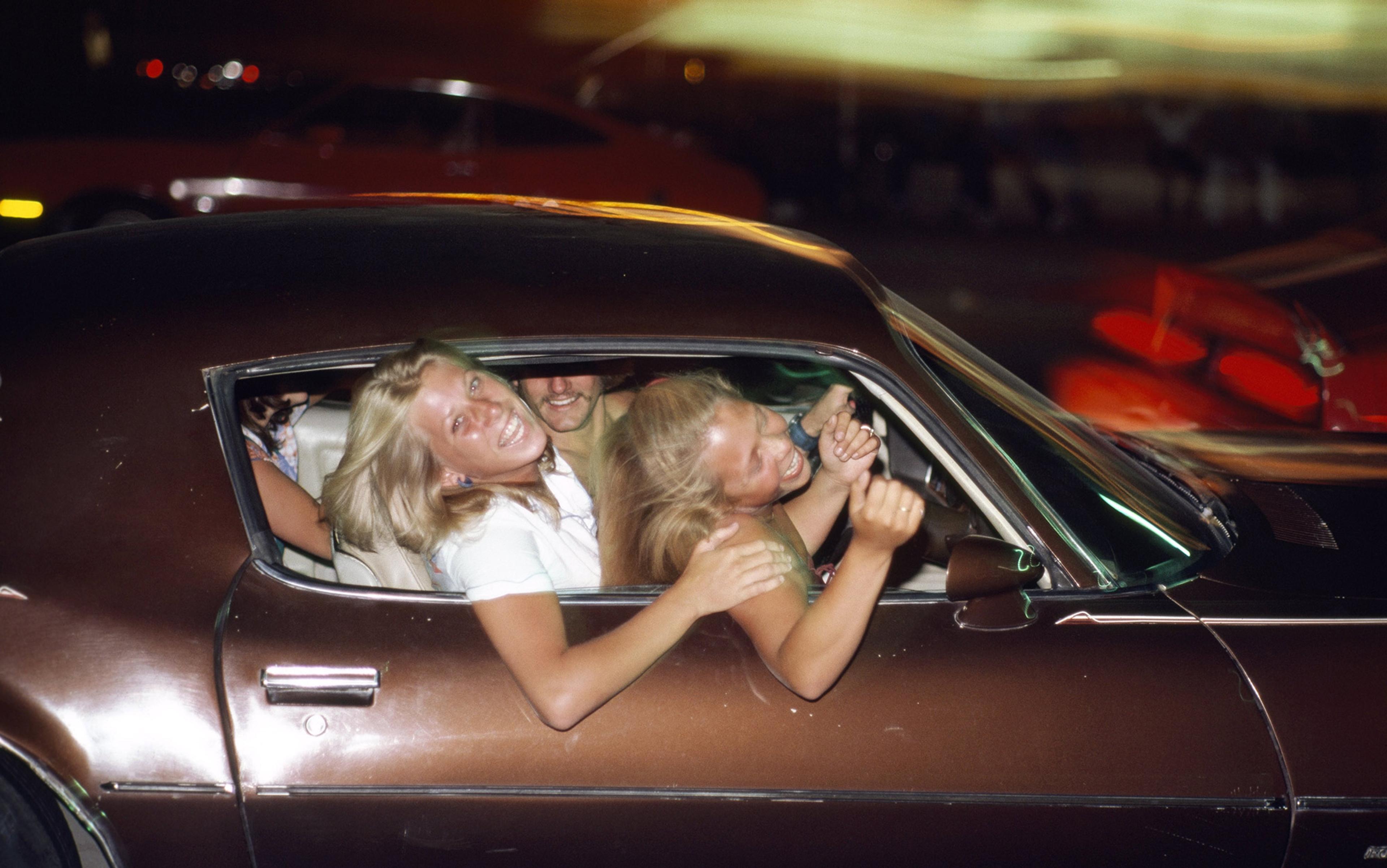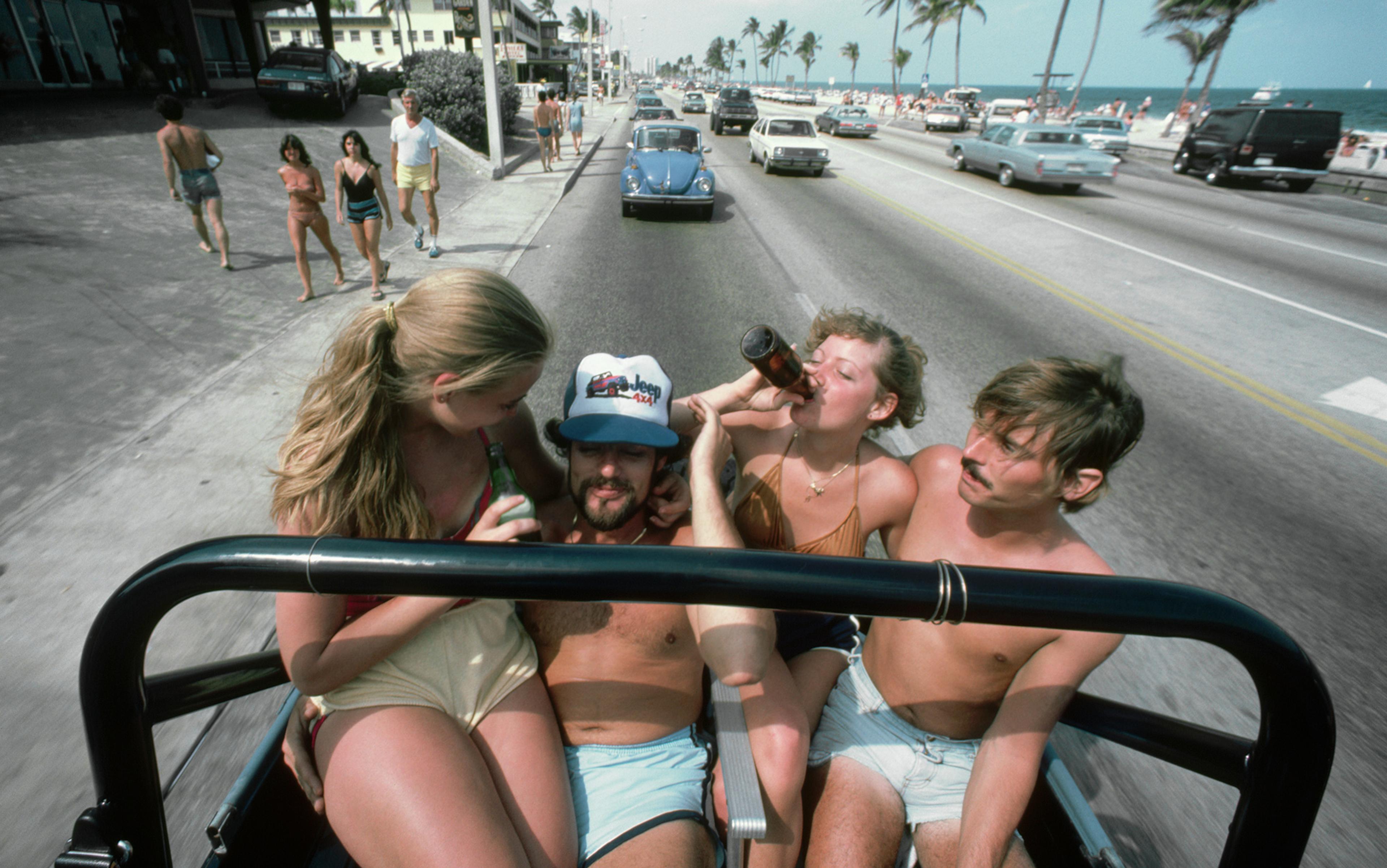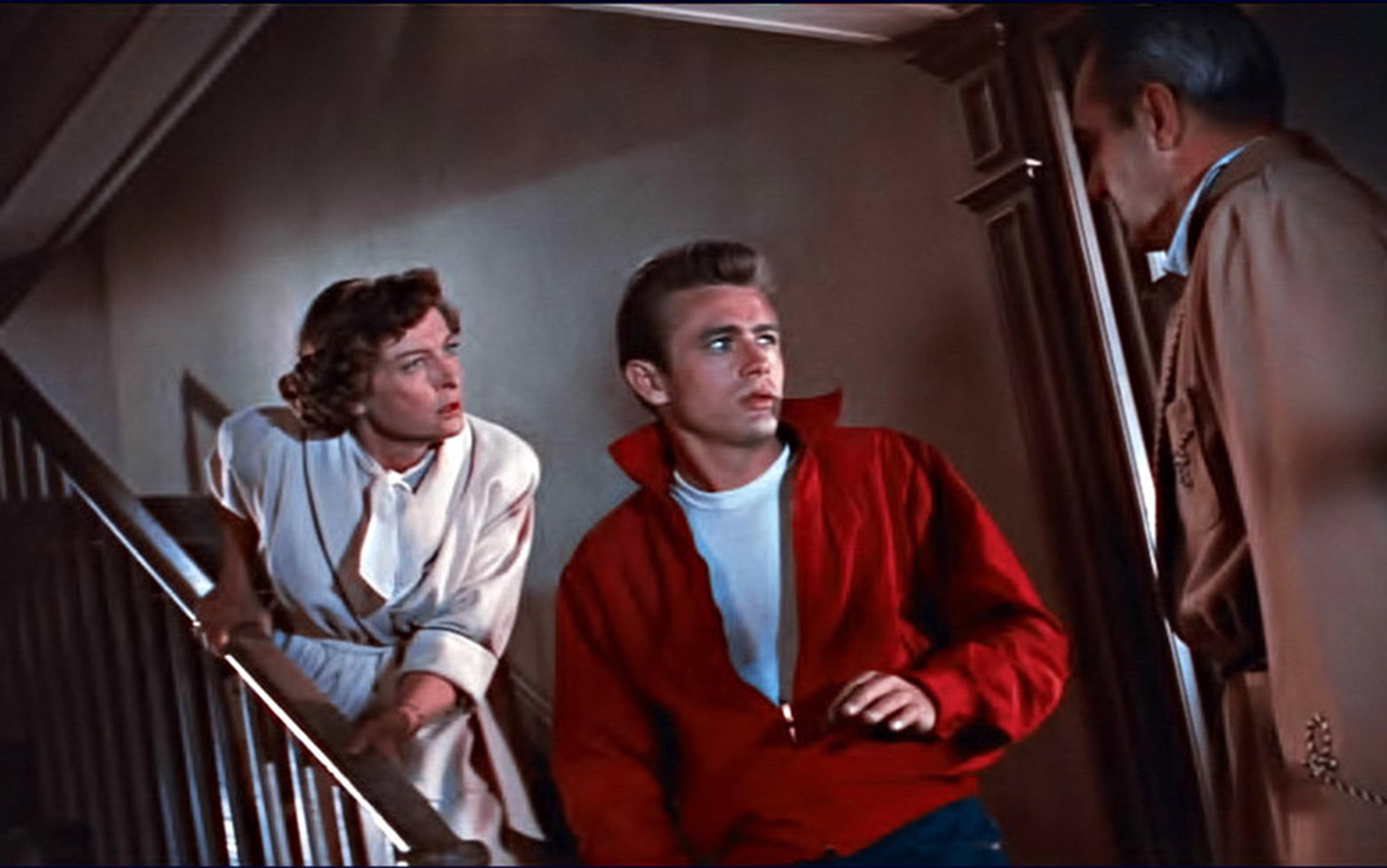Adolescence as an idea and as an experience grew out of the more general elevation of childhood as an ideal throughout the Western world. By the closing decades of the 19th century, nations defined the quality of their cultures by the treatment of their children. As Julia Lathrop, the first director of the United States Children’s Bureau, the first and only agency exclusively devoted to the wellbeing of children, observed in its second annual report, children’s welfare ‘tests the public spirit and democracy of a community’.
Progressive societies cared for their children by emphasising play and schooling; parents were expected to shelter and protect their children’s innocence by keeping them from paid work and the wrong kinds of knowledge; while health, protection and education became the governing principles of child life. These institutional developments were accompanied by a new children’s literature that elevated children’s fantasy and dwelled on its special qualities. The stories of Beatrix Potter, L Frank Baum and Lewis Carroll celebrated the wonderland of childhood through pastoral imagining and lands of oz.
The United States went further. In addition to the conventional scope of childhood from birth through to age 12 – a period when children’s dependency was widely taken for granted – Americans moved the goalposts of childhood as a democratic ideal by extending protections to cover the teen years. The reasons for this embrace of ‘adolescence’ are numerous. As the US economy grew, it relied on a complex immigrant population whose young people were potentially problematic as workers and citizens. To protect them from degrading work, and society from the problems that they could create by idling on the streets, the sheltering umbrella of adolescence became a means to extend their socialisation as children into later years. The concept of adolescence also stimulated Americans to create institutions that could guide adolescents during this later period of childhood; and, as they did so, adolescence became a potent category.
With the concept of adolescence, American parents, especially those in the middle class, could predict the staging of their children’s maturation. But adolescence soon became a vision of normal development that was applicable to all youth – its bridging character (connecting childhood and adulthood) giving young Americans a structured way to prepare for mating and work. In the 21st century, the bridge is sagging at both ends as the innocence of childhood has become more difficult to protect, and adulthood is long delayed. While adolescence once helped frame many matters regarding the teen years, it is no longer an adequate way to understand what is happening to the youth population. And it no longer offers a roadmap for how they can be expected to mature.
In 1904, the psychologist G Stanley Hall enshrined the term ‘adolescence’ in two tomes dense with physiological, psychological and behavioural descriptions that were self-consciously ‘scientific’. These became the touchstone of most discussions about adolescence for the next several decades. As a visible eruption toward adulthood, puberty is recognised in all societies as a turning point, since it marks new strength in the individual’s body and the manifestation of sexual energy. But in the US, it became the basis for elaborate and consequential intellectual reflections, and for the creation of new institutions that came to define adolescence. Though the physical expression of puberty is often associated with a ritual process, there was nothing in puberty that required the particular cultural practices that grew around it in the US as the century progressed. As the anthropologist Margaret Mead argued in the 1920s, American adolescence was a product of the particular drives of American life.
Rather than simply being a turning point leading to sexual maturity and a sign of adulthood, Hall proposed that adolescence was a critical stage of development with a variety of special attributes all of its own. Dorothy Ross, Hall’s biographer, describes him as drawing on earlier romantic notions when he portrayed adolescents as spiritual and dreamy as well as full of unfocused energy. But he also associated them with the new science of evolution that early in the century enveloped a variety of theoretical perspectives in a scientific aura. Hall believed that adolescence mirrored a critical stage in the history of human development, through which human ancestors moved as they developed their full capacities. In this way, he endowed adolescence with great significance since it connected the individual life course to larger evolutionary purposes: at once a personal transition and an expression of human history, adolescence became an elemental experience. Rather than a short juncture, it was a highway of multiple transformations.
Hall’s book would provide intellectual cover for the two most significant institutions that Americans were creating for adolescents: the juvenile court and the democratic high school.
Since adolescents were not quite adults, they were malleable enough to be reformed in ways that would improve their prospects and maintain the US promise
Hall made the transformational period of adolescence as important as childhood, but adolescents were also viewed as more problematic than younger children, and their potential for misbehaviour more dangerous. Jane Addams, a reformer with a sincere interest in youth (immigrant youth especially), noted in The Spirit of Youth in the City Streets (1909) that an ‘inveterate demand of youth’ was that ‘life shall afford a large element of excitement’ and that for many ‘the excitement has demoralised them and led them into law-breaking’. The juvenile court, which Addams helped to set up, was a response to these dangers and a means to enlist abundant youthful energy toward more positive goals. By viewing adolescents as malleable as well as potent, the juvenile court emphasised growth and socialisation, with a view to turning potential law-breakers into good, reliable citizens.
Reformers such as Addams looked to the court to help redirect the energies of youth, outraged by what they saw as the abuse of children in industrial production. Their concern was that unhappy young workers would also find alternatives to their drudgery. Thus, in Chicago, Addams discovered ‘a group of girls ranging in age from 12 to 17… trained by older women to open tills in small shops, to pick pockets, to remove handkerchiefs, furs and purses, and to lift merchandise from the counters of department stores’. Urban activists, concerned that the dislocations of immigration and rapid city growth would perpetrate both child labour and juvenile crime, hoped that the juvenile court would protect and guide youth who seemed adrift. Since adolescents were not quite adults, they were viewed as malleable enough to be reformed and/or educated in ways that would improve their own prospects and maintain the US promise.
That spirit of possibility was crucial to the framing of the juvenile court, one of Addams’s most lasting achievements. This court gave young offenders protection from the full force of adult law and criminal responsibility; not least, their records were sealed so as not to taint the future. Distinctly paternalistic in its design, the juvenile court aimed to nurture young offenders toward personal responsibility. In extending to adolescents the protections of childhood, the court supervised a wide variety of youthful misbehaviours, such as smoking and sexual activity, while inscribing the delayed maturity of adolescence into the social fabric.
As with social reformers, so with educators. Taking up the banner of adolescence, educators reimagined the US public high school as an institution that could address the needs of immigrants and other Americans, while maintaining a democratic idiom in a transforming world. Many of these educational reformers were inspired by John Dewey who hoped to reinvigorate democracy by looking to the potential of the young as participants in their own instruction. Toward this end, they transformed the US high school into a socialising institution for adolescents.
On a much grander scale than the juvenile court, the publicly financed comprehensive high school became possibly the most distinctly American invention of the 20th century. As a democratic institution for all, not just a select few who had previously attended academies, it incorporated the visions of adolescence as a critically important period of personal development, and eventually came to define that period of life for the majority of Americans. In its creation, educators opened doors of educational opportunity while supervising rambunctious young people in an environment that was social as well as instructional. As the influential educational reformer Elbert Fretwell noted in 1931 about the growing extra-curricular realm that was essential to the new vision of US secondary schooling: ‘There must be joy, zest, active, positive, creative activity, and a faith that right is mighty and that it will prevail.’
In order to accommodate the needs of a great variety of students – vastly compounded by the many different sources of immigration – the US high school moved rapidly from being the site of education in subjects such as algebra and Latin (the basis for most instruction in the 19th century US and elsewhere in the West) to becoming an institution where adolescents could learn vocational and business skills, and join sports teams, musical productions, language clubs and cooking classes. In Extra-Curricular Activities in the High School (1925), Charles R Foster concluded: ‘Instead of frowning, as in olden days, upon the desire of the young to act upon their own initiative, we have learned that only upon these varied instincts can be laid the surest basis for healthy growth … The school democracy must be animated by the spirit of cooperation, the spirit of freely working together for the positive good of the whole.’ School reformers set out to use the ‘cooperative’ spirit of peer groups and the diverse interests and energy of individuals to create the comprehensive US high school of the 20th century.
Educators opened wide the doors of the high school because they were intent on keeping students there for as long as possible. Eager to engage the attention of immigrant youth, urban high schools made many adjustments to the curriculum as well as to the social environment. Because second-generation immigrants needed to learn a new way of life, keeping them in school longer was one of the major aims of the transformed high school. They succeeded beyond all possible expectations. By the early 1930s, half of all US youth between 14 and 17 was in school; by 1940, it was 79 per cent: astonishing figures when compared with the single-digit attendance at more elite and academically focused institutions in the rest of the Western world.
High schools brought young people together into an adolescent world that helped to obscure where they came from and emphasised who they were as an age group, increasingly known as teenagers. It was in the high schools of the US that adolescence found its home. And while extended schooling increased their dependence for longer periods of times, it was also here that young people created their own new culture. While its content – its clothing styles, leisure habits and lingo – would change over time, the common culture of teenagers provided the basic vocabulary that young people everywhere could recognise and identify with. Whether soda-fountain dates or school hops, jazz or rock’n’roll, rolled stockings or bobby sox, ponytails or duck-tail hairstyles – it defined the commonalities and cohesiveness of youth. By mid-century, high school was understood to be a ‘normal’ experience and the great majority of youth (of all backgrounds) were graduating from high schools, now a basic part of growing up in the US. It was ‘closer to the core of the American experience than anything else I can think of’, as the novelist Kurt Vonnegut concluded in an article for Esquire in 1970.
The high school was a critical part of how second-generation immigrants were incorporated into the US mainstream
With their distinctive music and clothing styles, US adolescents had also become the envy of young people around the world, according to Jon Savage in Teenage (2007). They embodied not just a stage of life, but a state of privilege – the privilege not to work, the right to be supported for long periods of study, the possibility of future success. US adolescents basked in the wealth of their society, while for the rest of the world the US promise was personified by its adolescents. Neither the country’s high schools nor its adolescents were easily imitated elsewhere because both rested on the unique prosperity of the 20th-century US economy and the country’s growing cultural power. It was an expensive proposition that was supported even at the depth of the Great Depression. But it paid off in the skills of a population who graduated from school, not educated in Latin and Greek texts (the norm in lycées and gymnasia elsewhere), but where the majority were sufficiently proficient in mathematics, English and rudimentary science to make for an unusually literate and skilled population.
Above all, these adolescents had been guided through school for long periods of time while being encouraged to be independent in their many school activities and choices, a combination that fostered creativity and underwrote optimism about the future. The high school attached itself to the values of independence that Americans had come to value for themselves, while it carefully supervised its charges. Some immigrant parents initially resisted what they saw as a loss of control over their older children – both their children’s financial contribution and the potential alienation from their home cultures that high-school life enforced – but, in the end, Americans of almost all backgrounds participated. The high school, with its elaborate youth culture, was a critical part of how second-generation immigrants were incorporated into the US mainstream.
By the last third of the 20th century, the US high school had produced several generations of graduates and became a familiar and unifying family experience. Parents looked back on their own school life as a guide to what they might expect from their adolescent children. While adolescents could present special problems associated with sexuality, high schools also helped to guide parents through these shoals. The high school served as a guardian institution, keeping children off the streets and under the supervision of nurses, guidance counsellors (and sometimes mental health professionals) as well as coaches and other mentors. Parents, including immigrants new to the high-school experience, had also learned how to handle their sometimes unruly teenagers. Until the 1970s, many high schools also monitored sexuality by expelling pregnant girls (and those suspected of sexual activity) from school, thus enforcing guidelines that set sexual limits and defined a common propriety. By sponsoring proms and other social events, schools set norms of gender behaviour.
If high schools helped parents to handle their teenage children, the peer society of school helped adolescents handle their parents, since it provided them with an excuse for staying out after school and on weekends. And it legitimated various kinds of dating activity. Going to sports events or musical performances, working on the newspaper or in a club occupied non-school time with friends, effectively keeping parents at bay. It was an excellent bargain. One that the mid-century psychologist Erik Erikson believed provided a moratorium on adulthood as adolescents learned to define who they were and what they believed in. They were at once dependent and independent, not children and not adults. Erikson took some of the same qualities that had inspired Hall and the founders of the juvenile court and the US high school, and attached a new label to the seeking for affiliation and for excitement that was associated with adolescents. This was the ‘identity crisis’, and parents were encouraged to give their children space to work through it.
By the end of the 20th century, however, the special role of adolescence in US culture began to fall apart. Global competition was making skills acquired in high school obsolete as higher levels of schooled certification became necessary in the workplace. The longtime educational advantage of the US and the competence of its students was challenged as other nations prospered and offered their children schooling that was often superior when measured by international scores. New immigrants, who began to arrive in the US in large numbers in the 1970s, were less well-integrated into high schools as schools re-segregated, leaving Latino immigrants, for example, in underperforming schools.
High schools, long a glory of US education and a product of democratic culture, had lost their central social role. Graduation, once the final step for most Americans on the road to work and steady relationships leading to marriage, no longer marked a significant end point on the way to maturity. It provided neither an effective transition to adulthood nor a valuable commodity for aspiring youth, and was an impediment to those who dropped out. Going to college became a necessary part of middle-class identity, and this complicated the completion of adolescence for everyone. Now that college was held up as essential to economic success, the failure to go to college portended an inadequate adulthood.
The extension of necessary schooling into the 20s (and sometimes even into the 30s) strongly attenuated the relationship between a stage of physical maturation (puberty) and the social experiences to which it had been attached in the concept of adolescence. And active sexuality, which had been held at bay by a high-school life defined by dating, now intruded earlier and earlier into the lives of the young, while marriage was increasingly delayed. Adolescence was no longer an adequate description of this long postponement of adulthood. It never had been more than an in-between stage, meant to comprise a moratorium of a few years. Americans floundered to find a term to cover the new postponement of maturity. The best they have come up with is Jeffrey Arnett’s ‘emerging adulthood’.
Where 19th-century childhood was a magical kingdom of talking animals and ‘little people’, children’s minds could now be filled with dystopian fantasies of sex and violence
As the upper boundary on adolescence disappeared, the lower boundary was also shifting. Over the course of the 20th century, the age of sexual maturity for girls had steadily declined. Set in the mid-teens early in the century, it reached an average of 12.5 years by the 1970s, with many girls experiencing it when even younger. At the same time, a publicly sexualised culture began to make parents of children as young as eight worry about their children’s early exposure to highly provocative clothing styles, music videos and video games.
By the 1990s, the internet made all previous attempts to protect the innocence of children from premature knowledge of adult matters obsolete. Initial attempts to attach age-appropriate labels to movies and music (or keep risky television programmes to later hours) became irrelevant as the computer and, later, hand-held devices opened up the world to the eyes of children whenever they chose. By the 1990s, as a mark of their new sexual autonomy, girls as young as 14 could have abortions without their parents’ consent. Where the 19th century had dwelled on the fantasyland of childhood as a magical kingdom of talking animals, good witches and ‘little people’, children’s minds could now be filled with dystopian fantasies of sex and violence.
Extending the protections of childhood to a later age, as adolescence had for much of the 20th century, now made no sense since childhood itself was no longer innocent and easily protected. And trying to shield youngsters from responsibility for certain kinds of crimes (that were related to their age), as the juvenile court tried to do, also seemed beside the point. Smoking and loitering on the streets to play dice had been an alarming expression of rambunctious youth in the early 20th century. By the end of that century, Americans and the world witnessed teenagers killing other teenagers, as they did at Columbine High School in Colorado.
Although we still use the term ‘adolescence’, its cultural signals are mostly irrelevant. It no longer describes the period of training required to function as an adult in the 21st century, nor does it distinguish the boundary between the knowledge of children from those who have reached puberty. For parents, adolescence is an untrustworthy way to understand how their teenage children mature: they cannot clearly connect the sexual practices of their young progeny to stable mating in marriage, nor can parents see how schooling during adolescence will lead their offspring to satisfactory adult work. The idea of a tentative moratorium that gets resolved once teenagers create stable identities seems far-fetched, since the identities of even those in their 20s and sometimes their 30s are still in flux. Some have blamed helicopter parenting for the long delay in maturity, but regardless of its specific role, the path to adulthood has become much more tangled and uncertain.
There has been no effective substitute for the coherence once provided by the idea of adolescence and its two most compelling democratic institutions: the public high school and the juvenile court. The hopeful elements embedded in adolescence – the belief that youthful energy can be enlisted toward public goods – has also evaporated, as even well-off middle-class parents worry about their children’s future prospects.
While colleges and universities have extended educational training, they remain reluctant to provide the close supervision once offered by high schools, in good part because college students are presumably adults. As a result, students are largely on their own, sexually and socially. The sexual revolution of the 1970s removed most parietal regulations that once governed standards of behaviour (especially for young women) in such matters as sex and alcohol consumption. However, in recent years, college professionals have begun to fill the breach, expanding the office of the deans of students so as to offer greater guidance and practical help in response to extreme episodes of drunkenness and publicity about rape on campus. Universities are becoming alert to the ways in which college life is turning into the latest version of the high school, and are more responsive to legal and parental pressures. It might be possible to stretch the concept of ‘adolescence’ to apply to the lives of undergraduates, as going to college becomes part of growing up for youth in the US.
Adolescence was a term that fit the times. As a prescribed norm, it influenced the vast majority of youth between the ages of 13 and 19, whose lived experience was nurtured by a high-school culture that reproduced the same teenage experience throughout the US. Today, more and more young people’s lives do not fit the contours of adolescence, and the institutions of the 20th century have become worn and dated. Parents are left without the intellectual resources to understand how their teenagers and 20-somethings will manage in a future that seems ever more unlike their own. Without clear boundaries and a solid content, adolescence as a meaningful experience is on the road to disappearing in the US.
The End of American Childhood: A History of Parenting from Life on the Frontier to the Managed Child (2016) by Paula S Fass is published via Princeton University Press.






